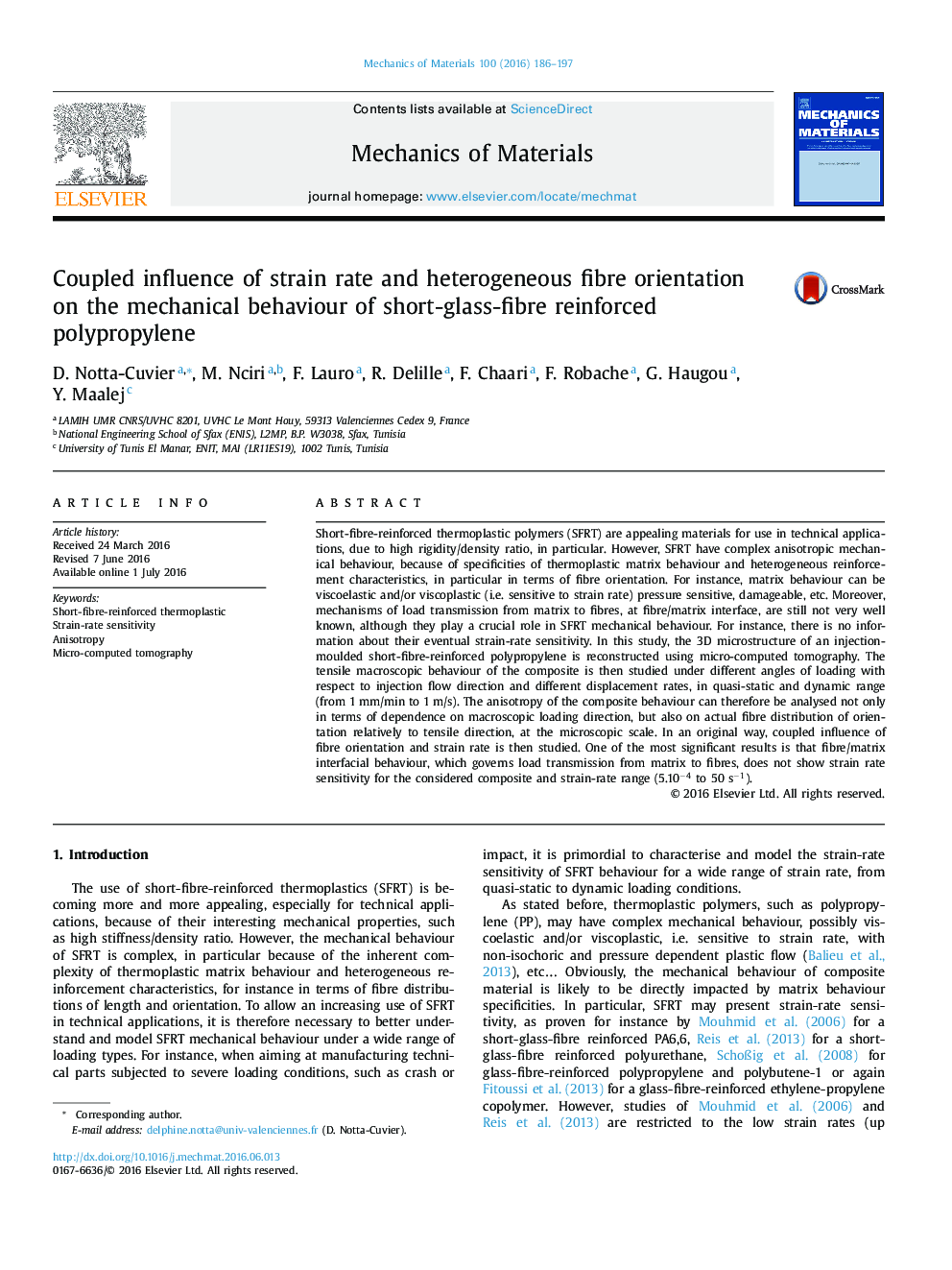| کد مقاله | کد نشریه | سال انتشار | مقاله انگلیسی | نسخه تمام متن |
|---|---|---|---|---|
| 799524 | 1467439 | 2016 | 12 صفحه PDF | دانلود رایگان |
• QS and dynamic tensile tests are performed on a short-glass-fibre reinforced PP.
• Different angles of loading with respect to injection flow direction are considered.
• Local distributions of fibre orientation are investigated by µ-CT.
• Joint influence of strain rate and local fibre orientation on behaviour is analysed.
• Load transmission at fibre/matrix interface appears insensitive to strain rate.
Short-fibre-reinforced thermoplastic polymers (SFRT) are appealing materials for use in technical applications, due to high rigidity/density ratio, in particular. However, SFRT have complex anisotropic mechanical behaviour, because of specificities of thermoplastic matrix behaviour and heterogeneous reinforcement characteristics, in particular in terms of fibre orientation. For instance, matrix behaviour can be viscoelastic and/or viscoplastic (i.e. sensitive to strain rate) pressure sensitive, damageable, etc. Moreover, mechanisms of load transmission from matrix to fibres, at fibre/matrix interface, are still not very well known, although they play a crucial role in SFRT mechanical behaviour. For instance, there is no information about their eventual strain-rate sensitivity. In this study, the 3D microstructure of an injection-moulded short-fibre-reinforced polypropylene is reconstructed using micro-computed tomography. The tensile macroscopic behaviour of the composite is then studied under different angles of loading with respect to injection flow direction and different displacement rates, in quasi-static and dynamic range (from 1 mm/min to 1 m/s). The anisotropy of the composite behaviour can therefore be analysed not only in terms of dependence on macroscopic loading direction, but also on actual fibre distribution of orientation relatively to tensile direction, at the microscopic scale. In an original way, coupled influence of fibre orientation and strain rate is then studied. One of the most significant results is that fibre/matrix interfacial behaviour, which governs load transmission from matrix to fibres, does not show strain rate sensitivity for the considered composite and strain-rate range (5.10−4 to 50 s−1).
Journal: Mechanics of Materials - Volume 100, September 2016, Pages 186–197
